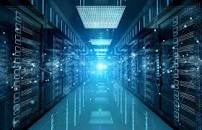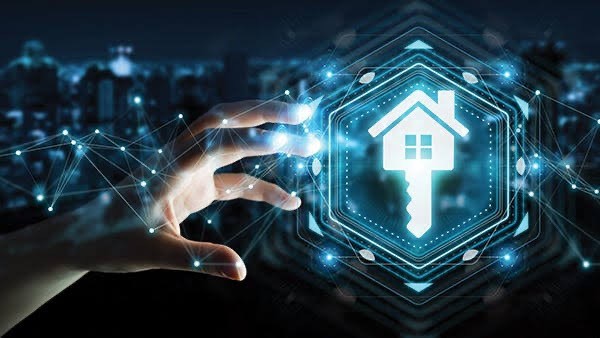The evolution from centralized facilities to edge deployments to future cloud services that will offer hyper-converged infrastructure and more powerful devices of data center system is a promising resolve for faster and safer transactions, easy communication, data storage, and more security in terms of sharing resources and data.
The assurance of long-term security and the maintenance of its reliability is the big assignments to plan and think ahead of as the modernization of the data center is taking place.
What is a data center?
The data center is a physical facility dedicated to housing computer systems and related components like telecommunications and storage systems. Its design is based on a network of computing that enables the delivery of shared applications, data, and other resources.
Largely, the data center consists of backup components, a structure for power supply, data communication connections, environment controls (such as temperature), and other security devices, with rows of servers, a cooling tower, and a large number of network cables.
Choosing the site or location of your data center is also important to planning ahead. Below are some of the things to consider:
- Labor costs and readiness – the cost of labor differ from place to place, so there will be a particular place that costs lesser, but the talent in running and maintaining a data center is a big question to answer first
- Vicinity to major markets and clients – reliable connections are the main factor in running a facility that customer demands meet.
- Environment conditions – temperature and humidity affects greatly on environmental systems and forecasting (earthquakes, hurricanes, and other unpredictable happenings can shut down a facility)
- Accessibility of the location and quality of the equipment
- Availability and cost of real estate
- Availability of telecommunications structure
- Cost of utilities
How a Data Center System works?
A data center system comprises physical servers that are connected through networking and communication resources to allow the storing of data, backup, and recovery, data management, transferring, and accessing of digital information. These centers can also store and serve Web sites, can run email and instant messaging services can, enable e-commerce transactions, power online gaming, and other things. Datacenter uses software to the group and to allocate loads in each server. Every single server has a processor and memory for storage, the same as a personal computer but with more power and enhanced performance.
Effective data center operation is attained through reinforcing the facility and equipment where it is located. Correspondingly, both must be secured against cyber-attacks.
What are the four main types of data centers?
The data center has many types that may or may not be suitable for your business needs. Below are the four main types of data centers:
- Colocation data center – This center is also known as colo. A large facility that rents space, including equipment, bandwidth, cooling systems, security, and others, to businesses. It is commonly used by organizations that have insufficient resources to sustain their own data center. Below are some of the best benefits of using this colocation data center:
- Scalable – adding new servers and other vital equipment to the facility is just easy
- Location – you can choose the nearest data center that is nearby to your customer’s location
- Predictable and has a lower price – compared to building your own facility, colocation is much lesser
- Reliable and more..
- Manage services data centers – owned and maintained by a third party. The company purchases the needed equipment and infrastructure rather than renting them. Also, it allows the company to have a certain level of administrative control.
- Enterprise data centers – a company-owned and developed data center that is used to process internal data and host critical applications exclusively. The facility of an enterprise data center is defined largely by its ownership and purpose rather than its size and capability. Also, this center usually consists of multiple data centers. Each is given with the purpose of sustaining vital functions. These sub-data centers are classified into three sets:
- Internet – supports the devices, equipment, and servers necessary for web applications
- Extranet – supports business-to-business communications within the enterprise data center umbrella; the transactions have happened over private WAN or secured VPN links
- Intranet – holds the application and data; the data is used for research and development, marketing, and other main business roles
Some of the remarkable advantages of this type of center are:
- Easy to track vital parameters such as power usage and bandwidth
- Keep the software updated
- Easy to estimate upcoming needs
- And more..
However, the disadvantages of this type of center are that: it requires a large number of investments, labor, maintenance, and other expenditures over time.
- Cloud data centers – the actual hardware is operated and managed by cloud company providers like Amazon Web Services, Google, IBM, Microsoft and etc. These allow customers to run websites and applications and access and manage their data through a virtual infrastructure that runs on cloud servers.
Few cloud service companies give their clients singular access to their own cloud accounts. This is known as private clouds. At the same time, public cloud providers make resources available via the internet, such as Amazon Web Services.
Below are several advantages of this type of center:
- the company pays only for the hardware used
- no need to worry about the updating, security, cooling of the environment and cost, etc.
Data centers are practical ownership of a company, but as the industry and computing demands grow, modernization of data centers is a must.
ANSI/TIA-942-A is the widely approved and commonly used standard for data center infrastructure. It conforms to four tiers defined by the Uptime Institute standard. These are used to certify a facility that meets all of the needs for one of the four categories of data center tiers that is assessed for redundancy and fault tolerance levels.
- Tier 1: Basic site infrastructure – this tier has a single path for power, cooling, and backup resources; expected uptime: 99.671% or 28.8 hours of downtime yearly
- Tier 2: Redundant capacity – has a single path for power, cooling, and some redundant and backup resources; expected uptime: 99.741% or 22 hours of downtime yearly.
- Tier 3: Concurrently maintainable – has multiple paths for power and cooling and with systems in place to update and maintain the processes with no need to take it offline; expected uptime: 99.982% or 1.6 hours of downtime yearly.
- Tier 4: Fault-tolerant site – built to be completely fault-tolerant with redundancy for all components; expected uptime: 99.995% or 26.3 minutes of downtime annually.
The needed tier of the data center depends on the service SLAs and other factors, such as the condition of your hardware.
Why are data centers important to business?
The fact that we progressively need data, the demand for faster processing, large storage space and information is mounting, and the endless cyber threat for businesses and any organization, data centers are likely to answer and address the problem.
Any entity that uses and generates data needs a data center at some point. This entity includes government agencies, schools, telecommunications companies, banks, and social networking services like Facebook. All of these needed fast Internet connectivity, some had a non-stop system operation, and others needed to establish their presence on the internet. Slow processing and unreliable access to information is absolutely a sign of an inability to provide a safe and faster transaction. This will lead to losing a customer, which can be a reason for closing a business. Below are some activities and applications of a company that the data center supports:
- Using of email and instant messages
- Hosting in-house business applications such as Customer relationship management (CRM), Enterprise resources planning (ERP) and etc. over a private cloud
- High-volume eCommerce processes and transactions
- Powering online gaming platforms, communities and etc.
- Data storage, backup, recovery, and data management
- Hardware infrastructure and communication services
Core components of a data center system
Data center system components that IT needs to store and manage the most critical resources that are very significant for the continuity of the operations of an organization comprised of the following:
- computing hardware
- network equipment such as cables, switches, and routers
- security system
- storage infrastructure
- server infrastructure
- management software and applications system
- uninterruptable power supply
- and power management equipment
The reliability, efficiency, and constant modernization of data centers are the highest priority for software and hardware security measures.
Types of data centers
The requirements and architectures of a data center significantly vary from one organization to another. But regardless of its classification, data center protection is the number one priority.
The continuous evolution of data center infrastructure caused the growth and classification of different types of the data center. These are colocation, managed data center, enterprise data center, cloud data center, and edge data center.
The first four were already discussed above as the main types of data centers, while the last one, the edge data centers, is less commonly used compared to others. Edge data centers are smaller facilities that allow organizations to deliver content and services to local users.
The Bottom Line
Data centers’ future is promising for this modern world, that computing continues to grow with stringent regulations and standards and with higher customer expectations. Although the cost of investment is higher yet, you can obtain the utmost possible level of performance, and security against cyber-attacks is guaranteed.
Also Read: 5 recommendations to enhance the computer security of your company


